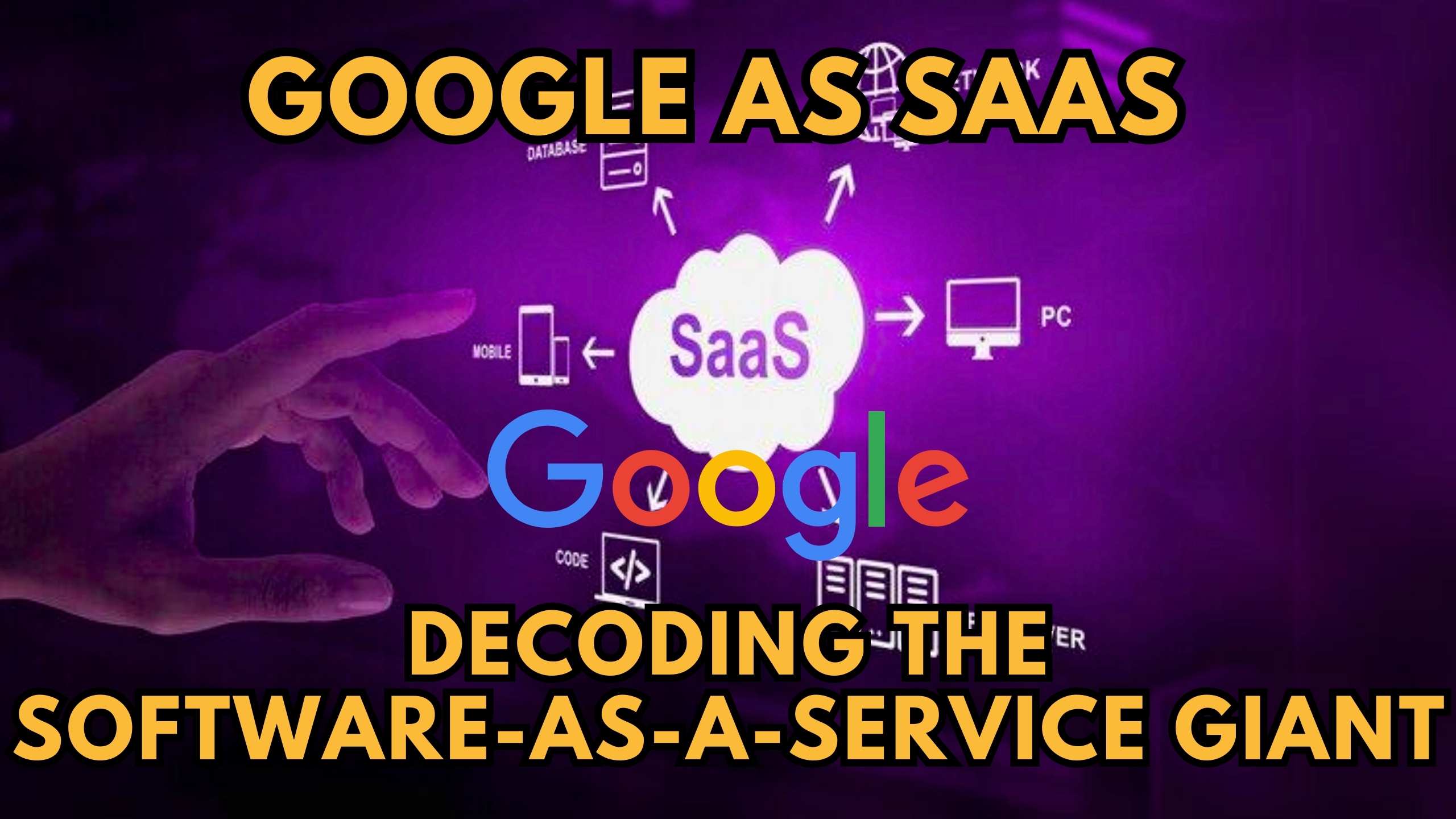Google as SaaS: Decoding the Software-as-a-Service Giant
- WebOps Platforms Bug Tracking & Feedback Software Web Development & Design


Google as SaaS: Decoding the Software-as-a-Service Giant
Google is undoubtedly one of the largest and most influential technology companies in the world. From its humble beginnings as a web search engine, Google has expanded into a vast ecosystem of products and services that billions of people use every day. But is Google an example of a software-as-a-service (SaaS) company? In this blog post, we’ll analyze key aspects of Google’s offerings to determine if and how it fits into the SaaS model.
What is SaaS?
In a quick refresher on SaaS, which stands for “software as a service,” applications are not installed locally on devices but accessed via the internet through a subscription-based pricing model. Examples of well-known SaaS platforms include Salesforce, Slack, Dropbox, and Zoom. The key characteristics of SaaS encompass web-based access, subscription pricing, centralized updates, and scalability. Now, the question arises: does Google check these boxes? Let’s explore further.
Google’s Range of Web Services
Subscription-Based Offerings
While Google built its initial success on free, ad-supported services, it has steadily introduced more paid and subscription-based options over the years.
For example, G Suite (now Google Workspace) charges monthly or annual fees for upgraded business and enterprise versions of productivity apps like Gmail, Drive, Calendar, Meet, and more. Features like increased storage, advanced admin controls, audit logs, and 24/7 support cater towards organizations.
On a smaller scale, subscriptions are also offered for additional storage for personal Google Accounts. Other paid tiers exist across services like Google Cloud Platform, Google One, YouTube, and Google Play.
Centralized Management and Updates
Furthermore, software maintenance is handled primarily by Google for its services. New features, updates, and patches are rolled out continuously by Google engineers behind the scenes, without users having to manually install anything on their devices.
Moreover, the online nature of Google’s services allows changes to be rapidly propagated across data centers. Consequently, there’s no need for customers to coordinate software upgrades themselves. This centralized and automated management is a signature of the SaaS model.
Scalability on Demand
As an early cloud computing pioneer, Google built the infrastructure and capabilities to scale phenomenally well. Leveraging technologies like containers and microservices, Google can rapidly provision additional compute resources to handle spikes in usage for services like Gmail, Drive, Cloud Platform, etc.
This ability to efficiently scale up and down depending on demand is key to delivering software reliably on a subscription basis to potentially billions of users. Only the SaaS model offers this flexible scalability.
Relevant Google SaaS Offerings:
- G Suite – Web-based productivity apps for business (now Google Workspace)
- Google Cloud Platform – Cloud computing infrastructure, platform, and services
- YouTube Premium – Ad-free video streaming subscription
- Google One – Expanded cloud storage subscription
- Google Play Pass – Subscription for unlocking apps and games
Conclusion
When analyzing Google through the lenses of web access, subscription pricing, centralized management, and scalable delivery, there is a clear case to classify parts of Google like Google Cloud Platform, Google Workspace, YouTube Premium and more as software-as-a-service.
The evolution from search engine to SaaS juggernaut has been over 20 years in the making. And Google continues expanding its subscription products, with recent additions like the Google One VPN highlighting its embrace of the SaaS model to complement its ad-supported services. Leveraging its unrivaled cloud infrastructure, we can expect Google to offer even more innovative SaaS products for years to come.
Time to Take Control of Your SaaS Stack!
Subscribed.fyi is the ultimate subscription management solution that lets you effortlessly find, track expenses, monitor, cancel and renegotiate all your subscriptions in one place. Unlock secret member-only deals totalling savings of $100,000+ per year on 100+ top SaaS tools!
With a single click, Subscribed.fyi gives you complete control over your expenses. It’s suitable for freelancers, agencies, and teams of all sizes. Compare tools, evaluate pricing and reviews, and make informed decisions – for FREE!
Relevant Links:
- Google Workspace
- Google Cloud Platform
- YouTube Premium
- Google One
- Google Play Pass
- Zoom
- Dropbox
- SlackSalesforce,
- Subscribed.fyi





